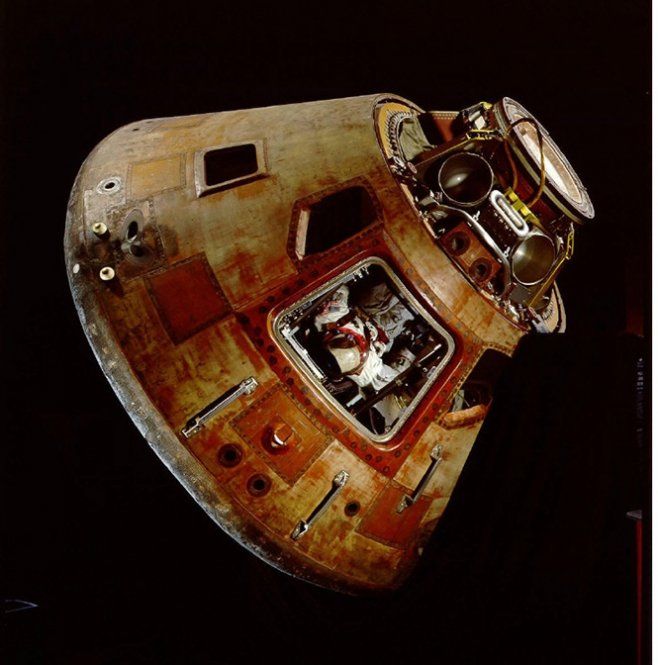
The command module Columbia from the Apollo 11 mission to the moon will leave the National Air & Space Museum, in Washington, D.C., this October, for the first time in 46 years, to tour four cities around the country. The traveling exhibit, “Destination Moon: The Apollo 11 Mission,” will visit the Space Center in Houston this October, then move on to the St. Louis Science Center in April 2018, the Heinz History Center in Pittsburgh in September 2018, and the Museum of Flight in Seattle, in March 2019. In September 2019 the command module will return to Washington, where it will become part of a new exhibit, “Destination Moon,” scheduled to open in 2021. The tour will celebrate the approaching 50-year anniversary of the first manned lunar landing mission, in July 1969.
The tour will mark the first time Columbia will leave the museum since it opened to the public in 1976. Before entering the collection, the command module traveled on a 50-state tour during 1970 and 1971. It then went on display in the Smithsonian’s Arts and Industries Building until its move to the new NASM. If you can’t make it to the exhibit, you can explore the interior of the module online via NASM’s new 3-D interactive tour. The tour was created from high-resolution scans of Columbia performed at the Smithsonian in Spring 2016. The interactive graphics enable users to explore the entire craft including its intricate interior, which has been inaccessible to the public until now.
The command module, manufactured by North American Rockwell, was one of three parts of the complete Apollo spacecraft. It provided the living quarters for the three-man crew during most of the lunar-landing mission. The other two parts were the Service Module, which contained the main spacecraft propulsion system and consumables, and the Lunar Module, nicknamed “Eagle,” which was used by Neil Armstrong and Edwin “Buzz” Aldrin to descend to the moon’s surface. The third astronaut, Michael Collins, remained aloft. The Command Module is the only part of the spacecraft that returned to Earth.


































